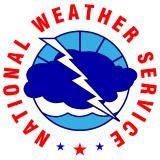Southeast Climate Monthly Webinar: January 11, 2021
December was warm with several temperature records broken across the Southeast region. Recent precipitation events have improved streamflows and reduced some of the drought severity across the region. A cold outbreak later this month could freeze some areas, but should not reach too far into Florida. This month’s topical presentation discussed hourly precipitation trends in the Southeast.
About This Webinar
The Southeast Climate Monthly Webinar Series is hosted by the Southeast Regional Climate Center, the National Integrated Drought Information System (NIDIS), and the NOAA National Weather Service. These webinars provide the region with timely information on current and developing climate conditions such as drought, floods, and tropical storms, as well as climatic events like El Niño and La Niña. Speakers may also discuss the impacts of these conditions on topics such as agriculture production, water resources, wildfires, and ecosystems.






